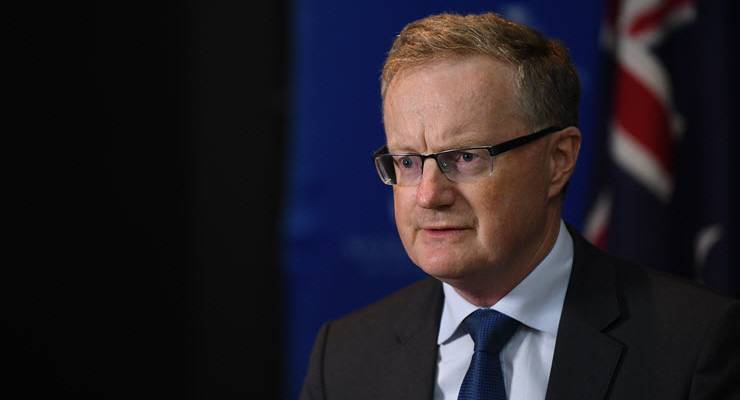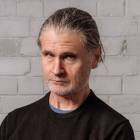
The Reserve Bank governor Philip Lowe yesterday laid out a very clear path for what has to happen to get Australia back to something like economic normality — and for the bank to exit its new program of quantitative easing.
The board will not increase the cash rate until actual inflation is sustainably within the target range. It is not enough for inflation to be forecast to be in the target range. For inflation to be sustainably within the target range, wage growth will have to be materially higher than it is currently. This will require a lower rate of unemployment and a return to a tight labour market. On the current outlook, it will take some years to get there.
The logic is clear: inflation (actual inflation) will drive monetary policy, but actual inflation will need wages growth, and wages growth won’t happen until we reach a “tight labour market”. That is likely around 5%, experts now say — though when we were last at 5% unemployment, the dial on wages growth didn’t shift.
So jobs are the main game. “The RBA has a broad legislative mandate for price stability, full employment and the economic welfare of the Australian people,” Lowe said in his formal statement. “Unemployment is a major economic and social problem that damages the fabric of our society.”
He went further during the following media conference, saying “my main worry is not enough people having jobs they deserve”.
The statement revealed a more positive set of economic forecasts from the bank — we’ll learn more in Friday’s Statement of Monetary Policy — but Lowe anticipated the question of why the bank was going hard with quantitative easing.
The nature of the pandemic-induced recession was now clearer, he said — it would be longer and more difficult than expected, even if we don’t plumb the depths feared earlier in the year. Moreover, he bluntly added, “even with today’s decision, inflation would be too low and unemployment too high.”
Beyond the cut in the cash rate to 0.1% and the targeting of 0.1% as the new three-year bond rate, the bulk of the RBA’s program of quantitative easing is focused on pushing down longer-term bond rates, with a $100 billion program of purchasing over the next six months.
Each week the bank will buy $5 billion worth of five, seven and 10 year bonds on the secondary market, 80% of which will be Commonwealth and the remainder state government, all with the goal of further pushing down interest rates in Australia.
Media references to the size of the package compared to overseas equivalents — “peashooter to a bazooka fight”, according to the AFR — are ignorant and wrong. Other economies engaged in quantitative easing — especially the US Federal Reserve — oversee economies orders of magnitude larger than ours. The package is about the size anticipated by markets, though if anything the six month timeframe is slightly quicker than expected.
It’s also interesting what Lowe didn’t say in his speech or remarks. You’ll look fruitlessly for any references to “reform” or structural changes. Having previously urged both fiscal stimulus and microeconomic reform, Lowe has given up on the reform stuff.
Perhaps he recognises that much of the “reform” vaunted by advocates in places like the Financial Review will have little, if any impact on employment, and in the case of industrial relations reform likely reduce wages, not increase them.
But government does have a role, as Lowe explained, noting “…in the context of the pandemic, the responsibility for job creation falls mainly on the shoulders of business and government.”
The government has done a good job of providing stimulus so far — Jobkeeper, the Jobseeker supplement and Homebuilder have all worked well so far — but a lot more needs to be done; rather than tapering off the support, another bout of stimulus is likely to be needed in the first half of 2021.
In its new forecast, the bank sees GDP growth around 6% over the year to next June, falling to 4% in 2022. Unemployment will peak at a little below 8%, “rather than the 10 per cent expected previously,” but still be around 6% at the end of 2022.
But underlying inflation still won’t reach the RBA’s target band for years — it will still be 1.5% in 2022. In fact, barring some major global shock — a major war, serious civil conflict in the US, the collapse of a major oil producer — there seems no way inflation will return “sustainably” to the target range for many years to come.
Inflation is still dictating monetary policy — but with the goal of raising it, not suppressing it.









The only thing that will drag Australia out of Scomo
s recession will be rising wages/incomes or a continuation of jobseeker/keeper at a living level, but thats something no austerity minded economic illiterate conservativepolitician/supporter can or will ever understand, grasp or accept.Just what I thought. A clear case of a government being congenitally unable to do what the economy requires. And then the Coalition are better economic managers than Labor – spare me.
Essentially, they are still in thrall to the NAIRU, an entirely fictitious number that is currently set to a rate possibly likely in the 90s, not today.
We need some students of the real economy in the RBA, not these boffins. They are large,y bereft.
And driving down bond rates is not an unmitigated good, especially if all it does is drive up housing costs, which are already beyond crazy. Our economy is run by idiots with no imagination.
Just what we don’t need at the moment.